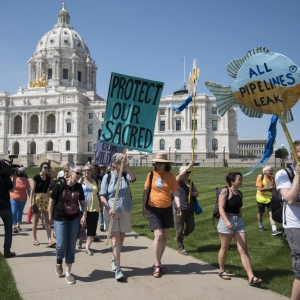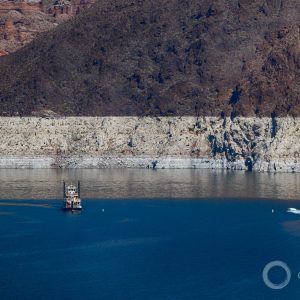This is Eileen Wray-McCann for Circle of Blue. And this is What’s Up with Water, your “need-to-know news” of the world’s water, made possible by support from people like you.
We begin the new year with a look at three positive developments in the United States.
In Michigan, a settlement to compensate victims of the Flint water crisis is a step closer to completion. On December 30, Gov. Gretchen Whitmer signed two bills that establish a $641 million trust fund. Money from the fund will settle civil lawsuits over lead-contaminated drinking water in Flint. Whitmer said that the payments will never completely repair the health damage and mental anguish from the lead crisis, but they will offer those who were harmed a measure of financial support in the years to come. She called it “a major step toward helping the people of Flint heal.” The state’s share of the settlement is $600 million. The rest of the funding will come from the city of Flint, McLaren Regional Medical Center, and Rowe Professional Services. Because children are more likely to be harmed by high lead levels, 80 percent of the trust fund is for Flint residents who were under the age of 18 at the time of the crisis in 2014. Michigan Radio reports that though legislative actions regarding the fund are now complete, the settlement still needs to be approved by a federal judge. The fund is not the only step forward for the city. Progress toward clean water in Flint is being made in other ways as well. Replacement of lead service lines, for instance, is nearly complete. The infrastructure upgrade was made possible with $120 million in state and federal funding.
It was a year of progress toward cleaner water elsewhere, as well. The city of Newark is also close to replacing all of its lead service lines. According to New Jersey Spotlight, New Jersey’s largest city had replaced 16,000 lead lines by the end of December, with a couple thousand still in the ground. Removing lead pipes was one of several clean-water achievements in the state last year. The city of Bayonne crafted a $321 million plan to cut sewer overflows by 73 percent. The plan consists of pumping station improvements, tanks, and rain gardens that hold moisture during storms and then release it slowly. New Jersey state officials, meanwhile, took action in response to PFAS compounds that are polluting water bodies. The Department of Environmental Protection set drinking water standards for two of the toxic compounds, PFOA and PFOS. Public water systems must begin monitoring for the compounds this year and apply treatment if they are found above the standards. Because utilities were not responsible for the pollution, the state has been seeking contributions from the companies that created the problem. In November, New Jersey’s attorney general’s office sued Solvay, a manufacturer of PFAS compounds. The lawsuit aims to recover the cost of environmental cleanup and drinking water treatment.
In the Navajo Nation, tribal leaders in the desert southwest are celebrating federal approval of a water rights settlement that will fund drinking water infrastructure on reservation lands in Utah. The settlement is part of the 2021 budget deal that President Trump signed at the end of December, and it has two main components. It confirms the Nation’s right to over 81 thousand acre-feet of water annually from Utah’s Colorado River Basin, and it provides $220 million to bring clean drinking water to Navajo communities in the state. Navajo President Jonathan Nez was elated on behalf of his community, saying “This is a victory for all of the Navajo families and leaders from the state of Utah and for the entire Navajo Nation.”
And that’s What’s Up With Water from Circle of Blue. This is Eileen Wray-McCann – happy New Year!





